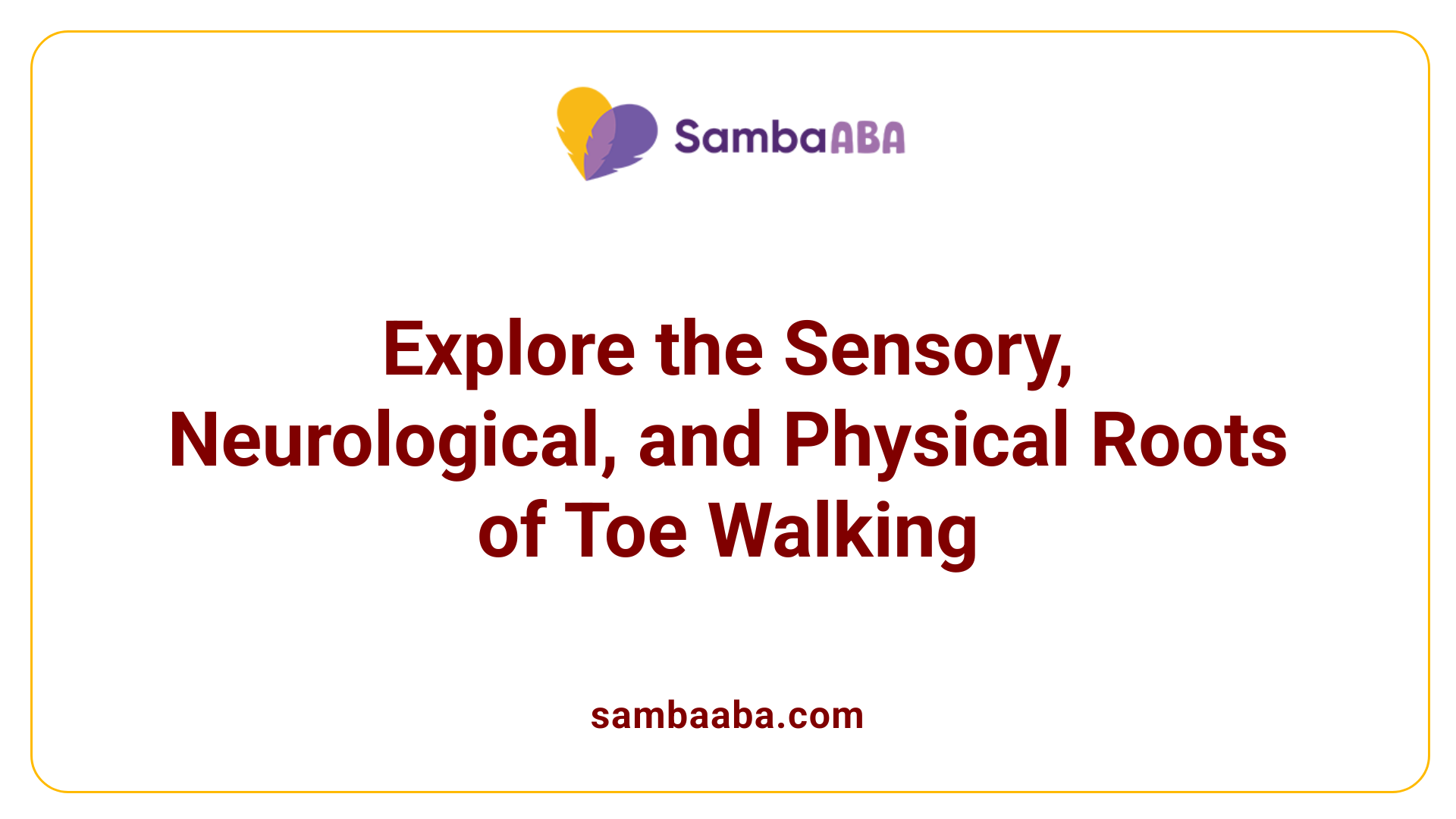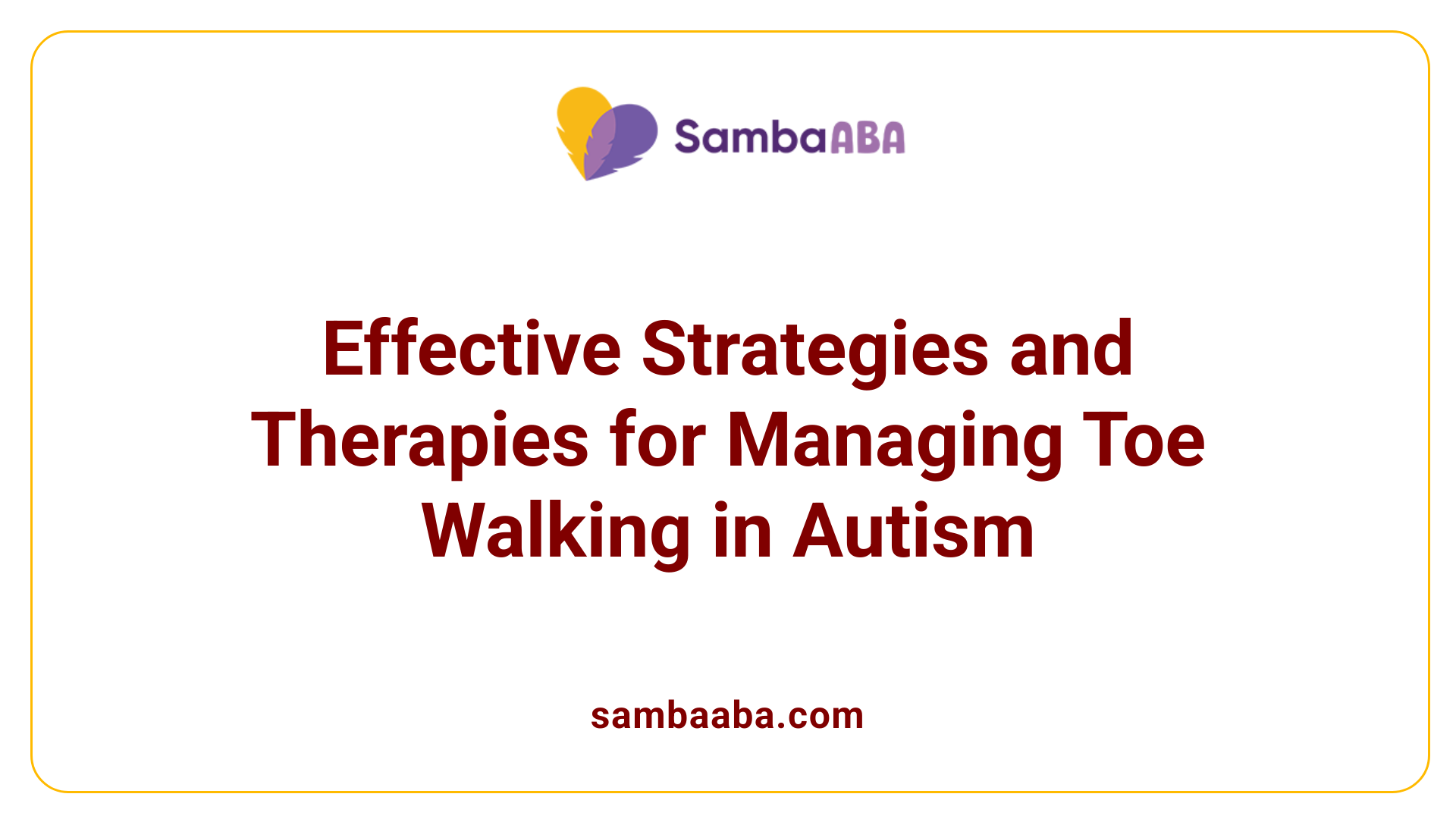Autism Toe Walking
Understanding Gait Differences in Autism Spectrum Disorder
Introduction to Autism and Gait Variations
Autism spectrum disorder (ASD) affects many aspects of development, including motor skills and gait. A notable gait pattern observed in autistic individuals is toe walking, which can persist beyond the typical age and may indicate underlying neurological or sensory processing differences. Recognizing the signs, causes, and treatment options for toe walking is essential for early intervention and improving quality of life.
Prevalence and Significance of Toe Walking in Autism

What is the prevalence of toe walking among children with autism?
Research shows that toe walking occurs more frequently in children with autism spectrum disorder (ASD) than in the general population. Studies indicate that around 8.4% of children with ASD are diagnosed with persistent toe walking. In contrast, less than 0.5% of neurotypical children exhibit this gait pattern.
In addition, research reports that 20% to 45% of children with autism may display toe walking behaviors at some point. One specific study highlights that approximately 6.3% of children with ASD show persistent toe walking, which means they continue to walk on their toes beyond the usual developmental period.
This higher prevalence underscores a strong association between autism and abnormal gait patterns like toe walking. The pattern is often linked with sensory processing differences, muscle tone issues, and neurological factors common in autism.
Could toe walking be seen in adults with autism?
Yes, toe walking isn’t exclusive to children; it can persist into adulthood among many individuals with autism. Those with longstanding toe walking habits often continue to walk on their toes well into adulthood.
Persistent toe walking in adults often reflects enduring neurodevelopmental traits associated with autism. Some may still exhibit other characteristic gait features, such as shorter stride length or increased cadence. While in children, many cases respond to therapies, in adults, toe walking can be a habitual pattern that signifies longstanding sensory or motor characteristics.
Understanding that toe walking can persist helps caregivers and clinicians recognize the importance of early intervention and ongoing support. For some adults, therapy options might still improve gait comfort and stability, but in many cases, habitual toe walking remains a lasting feature of their neurological profile.
Clinical Features and Diagnostic Signs of Toe Walking in Autism

Typical gait patterns in children with autism
Children with autism often develop distinctive gait patterns that can include persistent toe walking. Unlike typical children, who usually walk with heel contact by age 3, those with autism may continue walking on their toes or the balls of their feet. Their gait can show features such as reduced stride length, increased step cadence, and wider stride width. These variations are often accompanied by movement irregularities like increased ankle dorsiflexion and abnormal postural stability.
Associated behaviors and signs such as balance issues and muscle tone anomalies
Toe walking in children with autism frequently aligns with broader motor issues. Many exhibit balance and coordination problems, making walking and standing more challenging. Muscle tone can be affected, with some children displaying hypotonia (low muscle tone) or tightness in the Achilles tendons, contributing to the persistent toe gait. These motor signs may also include difficulties with posture, hand coordination, and handwriting, indicating wider neuromuscular involvement.
Impact of sensory and vestibular system dysfunctions
Sensory processing differences and vestibular system dysfunction are central to understanding toe walking in autism. Many children with ASD have sensory sensitivities, such as tactile hypersensitivity or proprioceptive seeking behaviors, which can influence their gait. A dysfunctional vestibular system, responsible for balance and spatial orientation, may cause instability and a tendency to walk on toes. These sensory and vestibular issues often lead to abnormal movement patterns as children attempt to self-regulate sensory input.
Signs and symptoms of toe walking in autistic children
Children with autism who toe walk typically show signs like walking exclusively on their toes, refusing to contact the ground with their heels, or only briefly touching down. They may have difficulty achieving a typical heel-toe gait and might show a preference for walking on their toes despite encouragement. Other signs include balance difficulties, reduced endurance during walking, and sometimes, increased muscle stiffness.
When should I seek medical help for toe walking associated with autism?
Parents should consider consulting a healthcare professional if toe walking persists beyond age 2 to 3 years or if it is associated with other autism signs such as language delays, social difficulties, or repetitive behaviors. Continued toe walking into preschool age can signal underlying issues like tight Achilles tendons, sensory processing problems, or neurological disorders such as cerebral palsy.
Early evaluation can help determine if intervention is needed. Treatments may include physical therapy, sensory integration techniques, orthotic devices, or, in some cases, surgical procedures. Addressing toe walking early can prevent potential long-term musculoskeletal problems, improve gait, and enhance overall mobility, supporting better development in children with autism.
Causes and Underlying Factors of Toe Walking in Autism
 Toe walking in children with autism is influenced by a complex interplay of neurological, sensory, and physical factors. Many children with autism exhibit sensory processing differences, especially in how they perceive touch, proprioception (body awareness), and visual cues. As a result, some may walk on their toes as a form of sensory regulation or self-soothing, helping them cope with sensory overload or seeking sensory input.
Toe walking in children with autism is influenced by a complex interplay of neurological, sensory, and physical factors. Many children with autism exhibit sensory processing differences, especially in how they perceive touch, proprioception (body awareness), and visual cues. As a result, some may walk on their toes as a form of sensory regulation or self-soothing, helping them cope with sensory overload or seeking sensory input.
A significant contributor is dysfunction in the vestibular system, which governs balance and spatial orientation. In children with autism, vestibular dysregulation can lead to difficulties maintaining proper gait, encouraging toe walking as an adaptive or compensatory mechanism.
Physical factors also play a role—such as tight Achilles tendons or neurological immaturity—that can limit ankle dorsiflexion, reinforcing the toe-walking pattern. This combination of sensory, motor, and physical issues reflects underlying neurodevelopmental differences rather than mere habit.
Studies show that nearly 9% to 20% of children with autism exhibit persistent or idiopathic toe walking, much higher than in neurotypical peers. This behavior is often linked to sensory and proprioceptive alterations and may be part of broader motor planning difficulties.
In essence, toe walking in autism cannot be attributed to a single cause. Instead, it results from diverse neurodevelopmental factors, including abnormal sensory processing, vestibular system dysregulation, and physical limitations. Addressing these underlying contributors through targeted therapies can help improve gait patterns and overall motor function.
For additional insights into this topic, a search using "Causes of toe walking in autism" can provide further detailed information.
Treatment Approaches and Management Strategies

What are the treatment options for toe walking in children with autism?
Managing toe walking in children with autism involves various strategies tailored to individual needs. Conservative treatments such as physical therapy focus on stretching exercises aimed at lengthening tight tendons like the Achilles. These include active and static stretches, strengthening exercises, and sensory integration techniques to improve motor planning and coordination.
In some cases, orthotic devices such as leg braces or splints are used to support proper gait. Serial casting, which involves applying a cast every two weeks for about 6-8 weeks, can help stretch tendons further. For persistent toe walking, Botulinum toxin (Botox) injections combined with serial casting—a protocol known as 'Cast and Go'—have shown promising results, especially in children with autism.
Surgical interventions, including Achilles tendon lengthening, may be considered when non-invasive methods do not yield improvements. Early intervention is crucial to prevent long-term deformities and improve mobility.
Furthermore, supplemental therapies like prism lenses, which displace the visual field, can provide immediate improvements by correcting visual-vestibular integration issues. Sensory and behavioral therapies, such as occupational therapy, help address tactile hypersensitivity and proprioceptive needs, contributing to gait correction.
Overall, a multidisciplinary approach combining physical, sensory, behavioral, and sometimes surgical treatments offers the best chance for effective management and improved quality of life.
What are the implications of untreated toe walking?
Failing to treat persistent toe walking can have several long-term consequences. Over time, untreated tight tendons and altered biomechanics may cause structural changes, including joint contractures and deformities. These physical alterations can impair normal gait and increase fall risk.
While some research suggests toe walking could be a cosmetic issue without significant physical effects, others highlight potential implications such as imbalance, muscle weakness, and secondary musculoskeletal problems. In children with autism, untreated toe walking may also stem from sensory processing issues, which if not addressed, could influence social interactions and behavioral development.
Early intervention aims to correct gait patterns, preventing the development of permanent deformities and reducing injury risks. Ignoring persistent toe walking might lead to compensatory postural habits, pain, or difficulty participating in physical activities, ultimately impacting overall health and mobility.
Therefore, consulting healthcare professionals for proper assessment and management is vital once toe walking persists beyond age 2, especially in children with or at risk for neurological or developmental disorders.
Summary and Future Directions in Autism and Toe Walking Research
What are the current research directions regarding toe walking and autism?
Current studies on toe walking in autism focus on uncovering the neurobiological and sensory factors involved in abnormal gait patterns. Researchers are examining the roles of brain structures like the basal ganglia and cerebellum, which are vital for movement control and coordination. Additionally, there is increasing interest in sensory processing issues, particularly how tactile hypersensitivity, proprioceptive dysfunction, and vestibular system abnormalities contribute to toe walking behavior.
Innovative therapies are also under evaluation. These include vestibular stimulation methods such as swinging on glider swings, visual-motor exercises, and behavioral interventions tailored to individual sensory profiles. Researchers aim to create comprehensive treatment protocols that incorporate physical, sensory, and behavioral strategies to improve gait and enhance motor skills.
Furthermore, emphasis is placed on early diagnosis and personalized treatment approaches. Understanding the variability in gait patterns among individuals with autism and developing targeted therapies is a priority. Studies strive to refine intervention techniques to optimize functional walking and minimize long-term musculoskeletal complications.
By unraveling these complex neurodevelopmental and sensory factors, current research paves the way for more effective, individualized support for children with autism experiencing toe walking.
Conclusion and Key Takeaways
Toe walking in children with autism is a common but complex gait pattern influenced by neurological, sensory, and motor factors. Its increased prevalence in ASD highlights the importance of early identification and intervention. A range of treatment options, from physical therapy to surgical procedures, are available, and personalized approaches yield the best outcomes. Understanding the underlying causes and maintaining vigilance for associated signs enable timely management, preventing long-term musculoskeletal issues. Ongoing research continues to improve our understanding and treatment strategies, emphasizing the importance of early, multidisciplinary efforts in supporting individuals with autism.
References
- Toe Walking and Autism Spectrum Disorder
- What is Toe Walking? - Autism Research Institute
- The Management of Toe Walking in Children with Autism Spectrum ...
- Toe walking in children and adolescents with Autism Spectrum ...
- Does Autism Cause Walking On Your Toes? - Healthline
- The Prevalence of Persistent Toe Walking in Children With and ...
- Toe walking in children - Symptoms & causes - Mayo Clinic
